Patrick Nagatani
Japanese American Internment or Concentration
Camps [as Nagatani called them ]1993-1995
ASG 1996

Amache, Japanese-American Concentration Camp, Colorado, A-2-10-2, July 29, 1994
Japanese American Internment Camps, or as Nagatani called them, Japanese American Concentration Camps (1993-1995) where he uses straight photography to create a narrative in which the land has memory of the activities that had impacted the Japanese American prisoners of these camps. His mother was interned in Manzanar, his mother’s father was initially sent to the Japanese Prison camp in Santa Fe, and later transferred to Manzanar. His father’s family was sent to Jerome, Arkansas, where his grandfather died. His mother and father both qualified for a program to relocate to Chicago in 1944 where they met. They eventually moved to Los Angeles where his father became an aerospace engineer and his mother taught school.

Gila River, Butte Camp, Jap-Am Concentration Camp, AZ, 3/25/95 / GRB-7-18-17, 1995
Nuclear Enchantment led to Nagatani's series on Japanese-American Concentration Camps (1995) in which he photographically documented what remains of many Japanese internment camps erected in the western United States during World War II. In an era of American history marked by hysteria and racism, 120,000 persons of Japanese ancestry were incarcerated, including Nagatani's parents and grandparents. Nagatani chose ten of the largest camps to photograph: Amache (Granada), CO, Gila River, AZ, Heart Mountain, WY, Jerome, AK, Manzanar, CA, Minidoka, ID, Poston, AZ, Rohwer, AK, Topaz, UT, and Tule Lake, CA. For the first time in many years the artist returned to a straight-forward, documentary method of photography, relying on the medium's inherent ability to record facts.
Many of the camps were isolated within vast grasslands or desert. Believing that land retains a memory of the events that unfold upon it, Nagatani spent as much time as possible at each site trying to apprehend the spirit of the place, searching the ground for artifacts, scanning the horizon and trying to imagine how its residents had withstood intense temperatures of summer and winter. Little of the original structures remained and some sites had been completely leveled. But in the debris Nagatani found the remains of rock gardens, ponds, and bits of pottery -- the relics of people who had struggled to make their circumstances bearable.
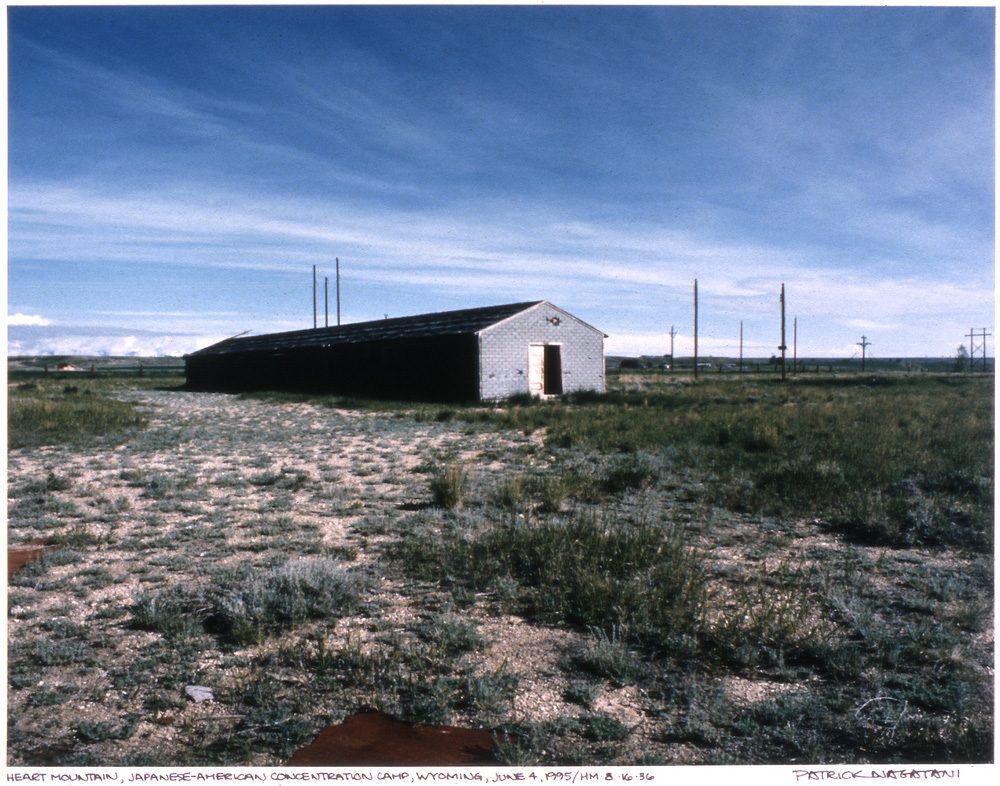
Heart Mountain, Japanese-American Concentration Camp, Wyoming, HM-8-16-36, 1995
Beneath the literal description of the architecture, foundations, artifacts and land of each camp, Nagatani's photographs in the Japanese-American Concentration Camps series are emotional testaments that subtly convey the artist's message about the cruelty of dislocation and imprisonment. His technical approach to this project was cooler than previous works and lacked his usual props of humor, highly charged color and layered images. The artist found himself deeply affected by the gravity of his subject, especially since members of his own family had been imprisoned. At each site Nagatani tried to achieve a heightened sensitivity in an effort to grasp an intangible collective memory.
The response to the Japanese-American Concentration Camps project by the Japanese community has been impressive. Upon seeing the images many people who had once been interned in the camps broke their long silence and began to talk, to remember.
The photographs are chromogenic prints printed on Kodak Ektacolor Supra II N dye-coupler paper.
Liz Kay, Andrew Smith Gallery Press Release, 1996.

Jerome, Japanese-American Concentration Camp, Arkansas, J-1-6-45, August 28, 1993
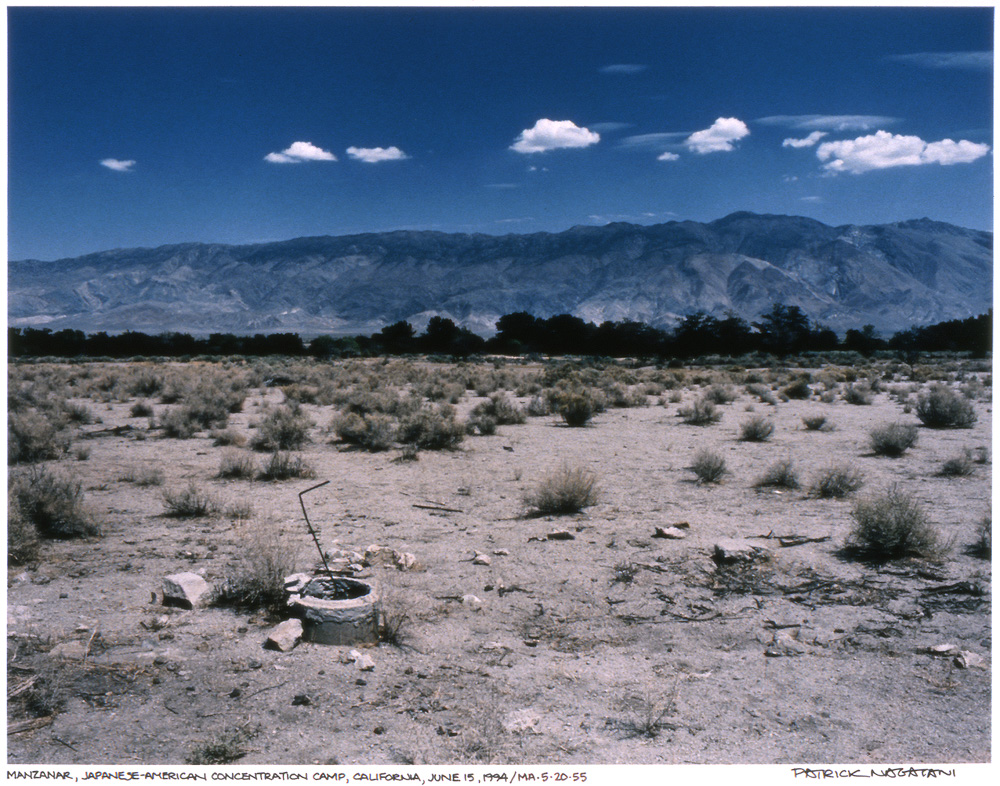
Manzanar, Japanese-American Concentration Camp, California, MA-5-20-55, June 15, 1994

Manzanar, Japanese-American Concentration Camp, California, MA10-20-60, Oct. 15, 1994
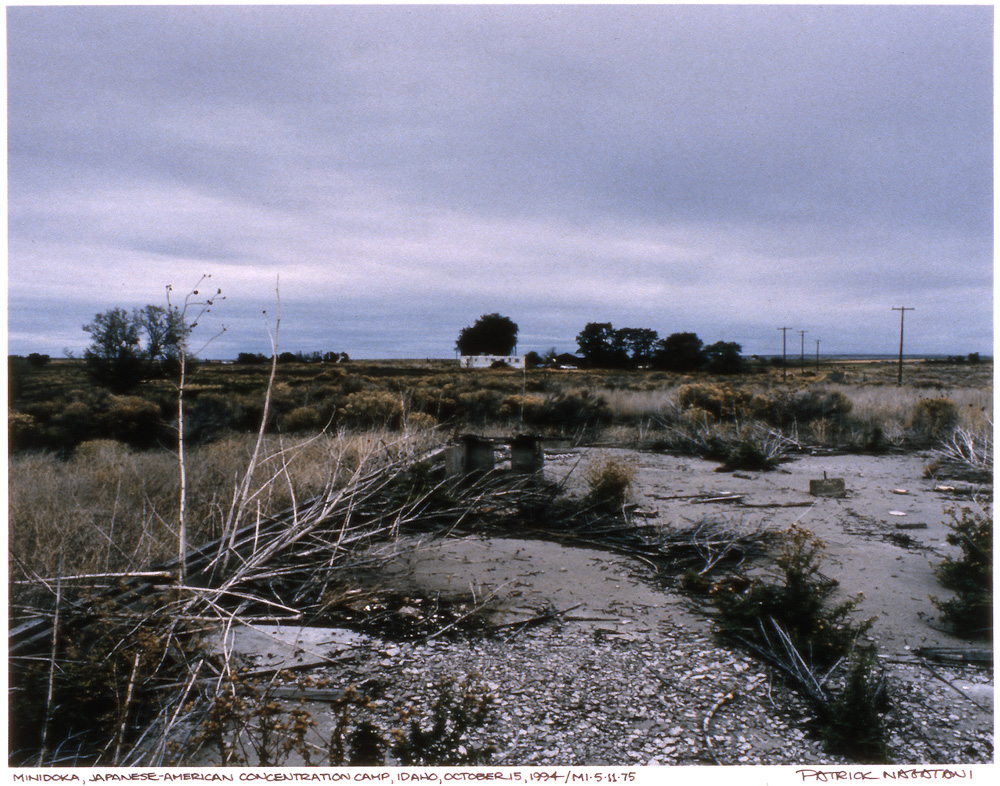
Minidoka, Japanese-American Concentration Camp, Idaho, MI-5-11-75, Oct. 15, 1994
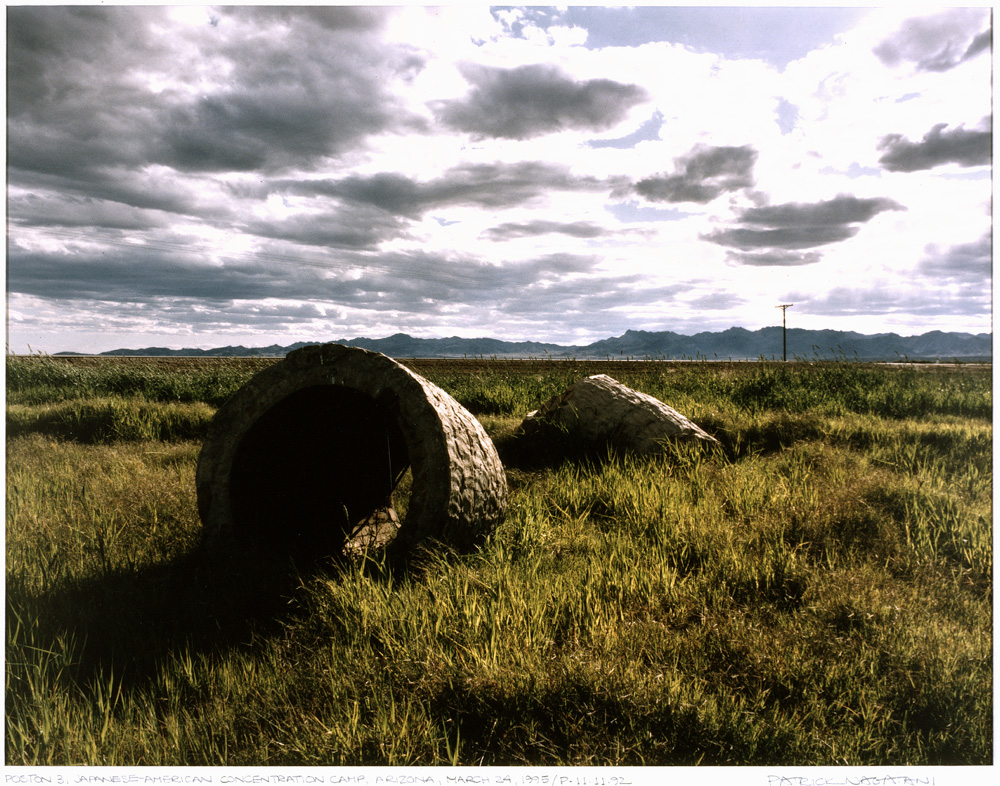
Poston 3, Japanese-American Concentration Camp, Arizona, P-11-11-92, March 24, 1995

Rohwer, Japanese-American Concentration Camp, Arkansas, R-4-6-96, August 28, 1993
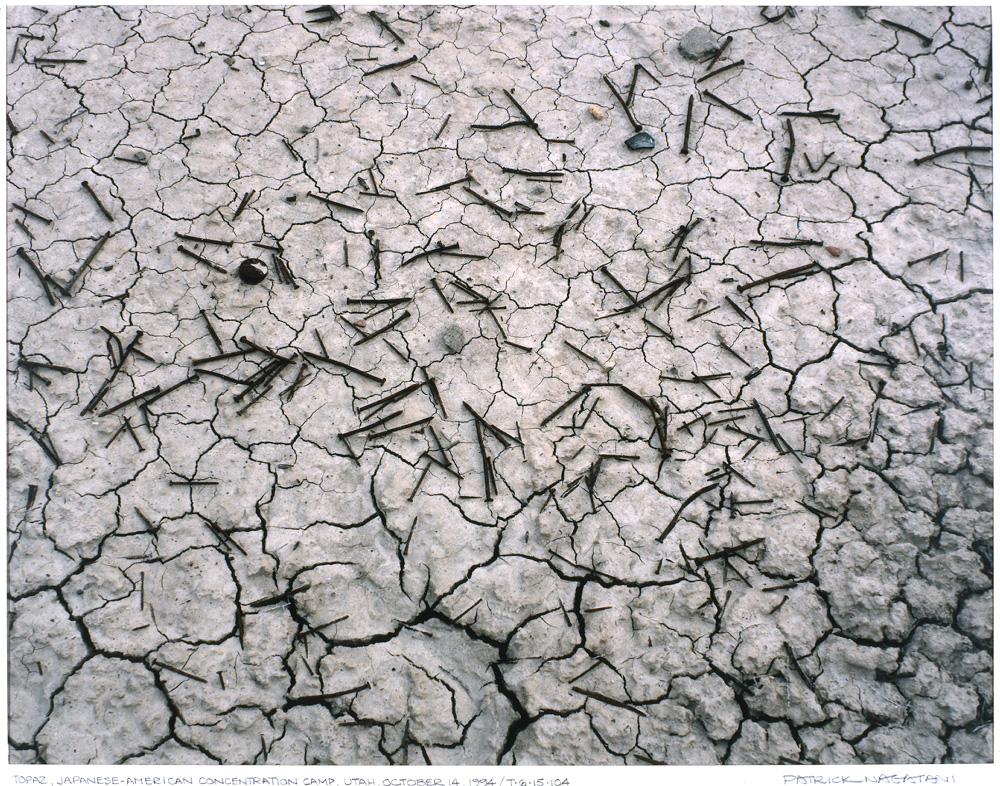
Topaz, Japanese-American Concentration Camp, Utah, T-6-15-104, October 14, 1994
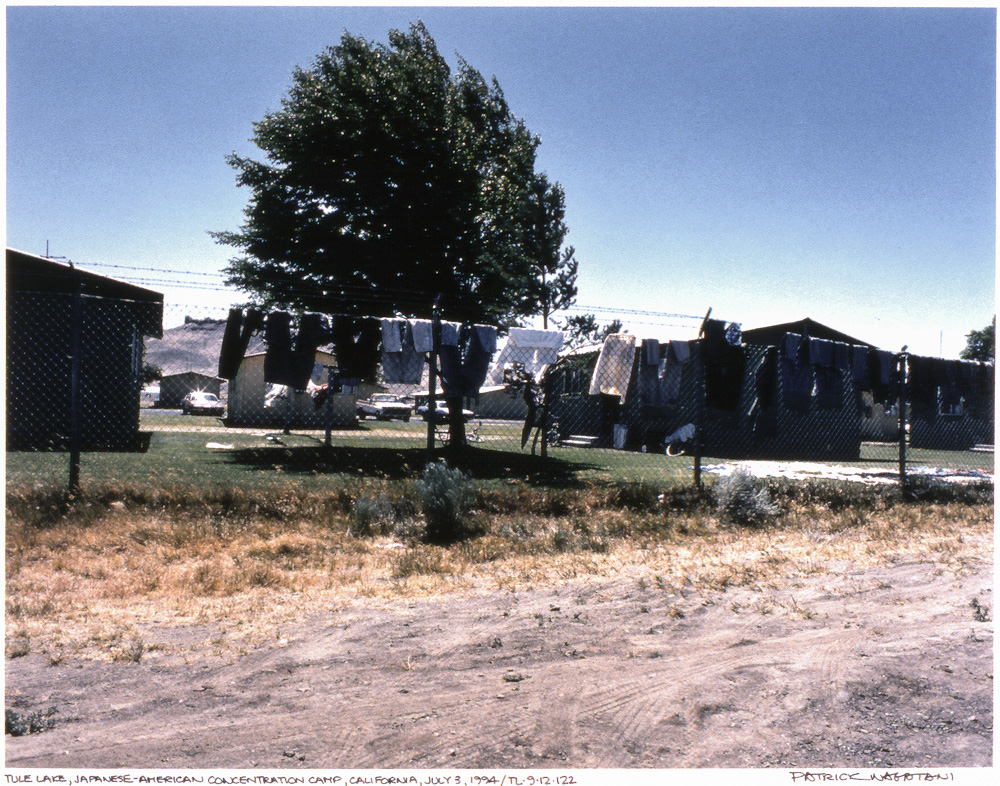
Tule Lake, Japanese-American Concentration Camp, California, TL-9-12-122, July 3, 1994

Gila River, Butte Camp, Jap-Am Concentration Camp, AZ, GRB-1-18-11, March 25, 1995

Manzanar, Japanese-American Concentration Camp, California, MA70-20-67, August 13, 1994